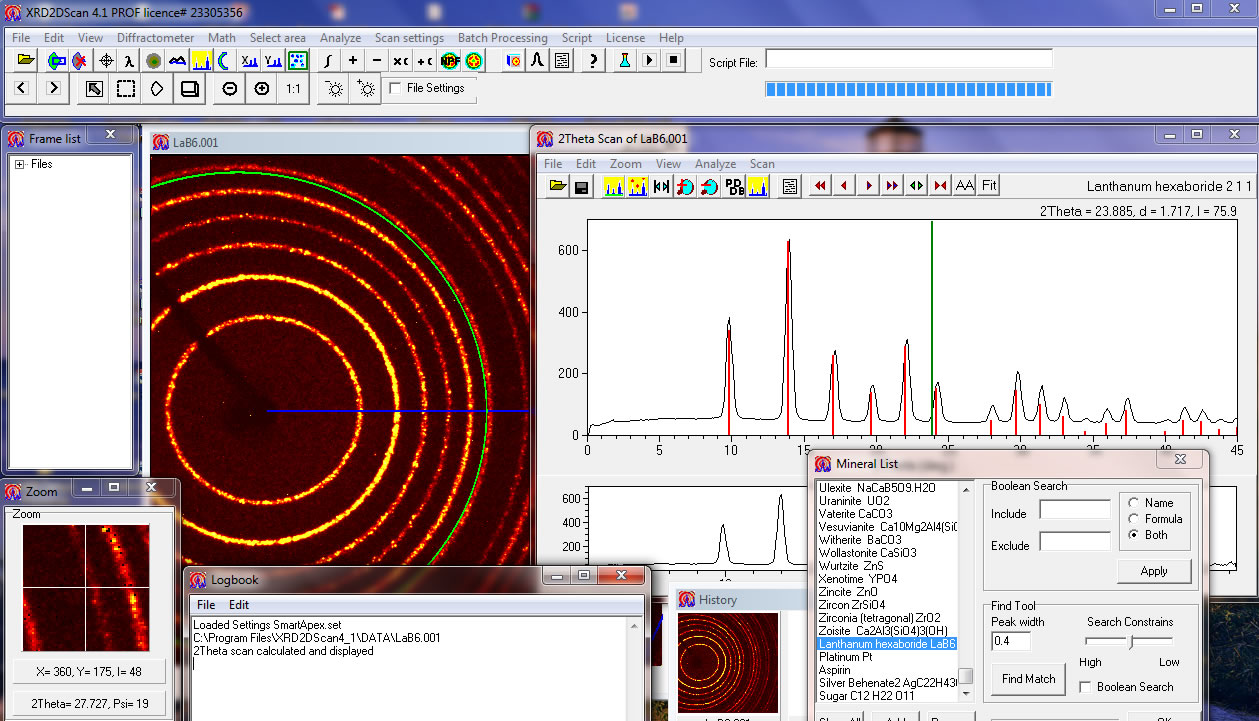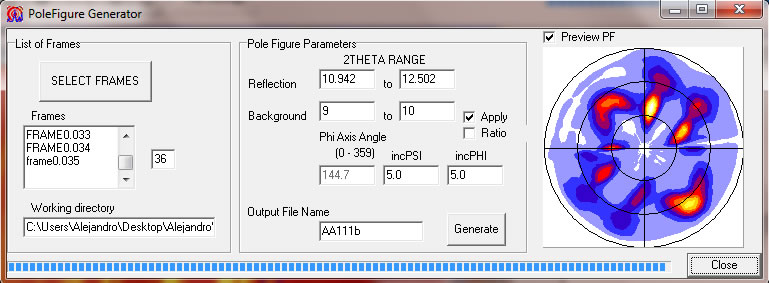XRD2DScan software
A SOFTWARE TOOL FOR POLYCRYSTALLINE MATERIALS CHARACTERIZATION USING TWO-DIMENSIONAL X-RAY DIFFRACTION
XRD2DScan is a Windows software tool for displaying and analyzing two-dimensional (2D) X-ray diffraction patterns or frames collected using a diffractometer equipped with a 2D or area detector (Image plate, CCD, Multy-wire). Two-dimensional diffraction patterns contains a wealth of information regarding the mineralogical composition and microstructure of polycrystalline materials. It can be used for quick mineral phase identification and microstructure (preferential orientation, pole figures, grain size and stress) analyses.
"Use your X-ray single-crystal diffractometer as an Advanced Materials Research / Powder diffractometer with XRD2DScan software"
Main interface displaying a 2D pattern of a LaB6 powder sample and the calculated powder diffractogram. It also displays the mineral identification tool.

Pole figure tool

Main features
_ Compatible with different diffractometer models and makers: Bruker - SMART APEX, GADDS, PROTEUM - , Oxford Diffraction - SAPPHIRE -, Mar Research, ADSC, Rigaku RMax, Nonius KCCD, TIFF, BMP.
_ Compatible with different detector geometries: Flat, Cylindrical (Debye-Scherrer or Guinier cameras), Spherical.
_ Generate multiple types of scans: 2Theta, Psi, X and Y scans.
_ Multiple parameters fitting (wavelength, distance to detector, detector size, direct beam coordinates using a standard.
_ Mineral database and identification tool
_ Compatible with Xpowder, JADE and EVA X-ray diffraction analysis software.
_ Logbook reporting all user actions and processed information
_ Batch processing of an unlimited number of files
_ Pole figure generation and analysis tool.
_ Operating system: Windows 98, 2000, XP and Vista.
_ Custom features can be develop upon request.
Important information
Download XRD2DScan 4.1.1 Installation software (updated on August 10, 2011)
Download user manual of XRD2DScan 4.1.1 including useful examples and applications. (updated on Agoust 10, 2011)
